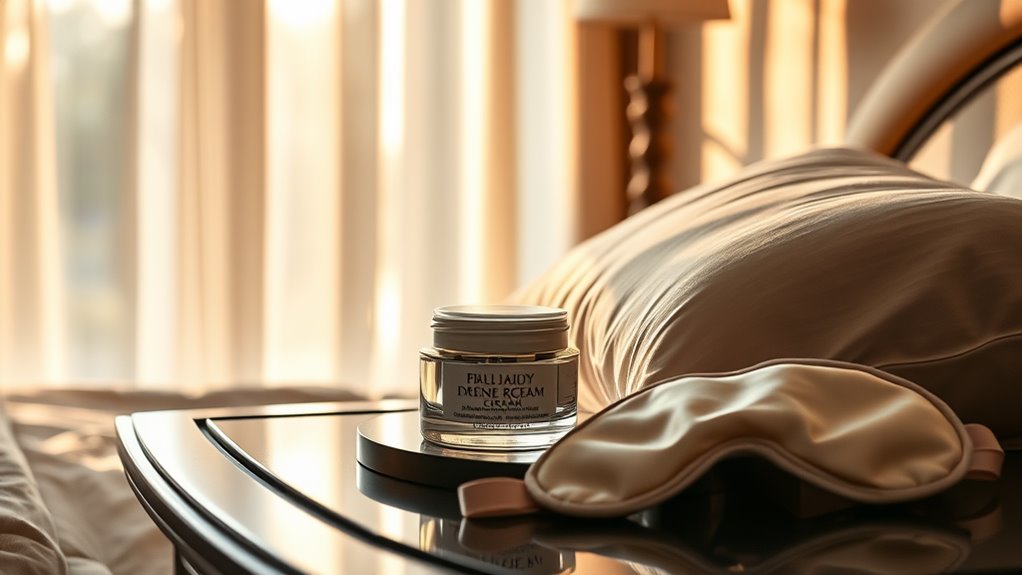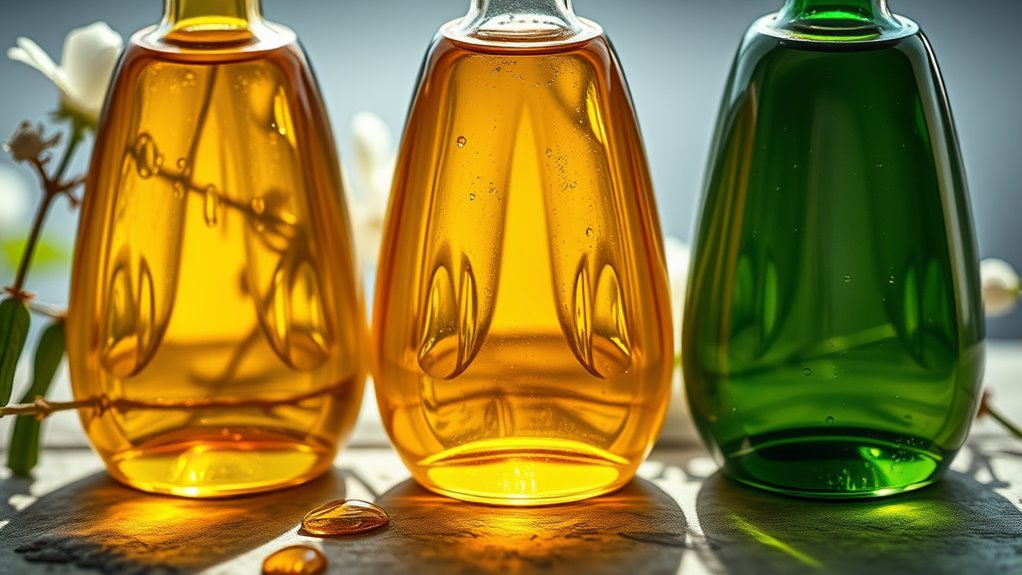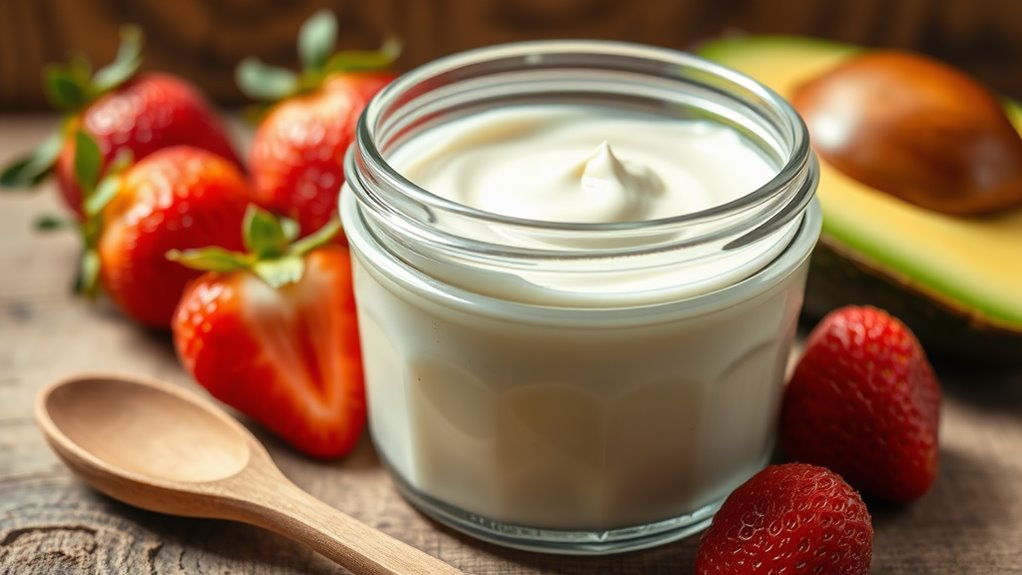The 1 Skincare Step That’s Aging You Faster
Neglecting sun protection is the one skincare step that’s aging you faster. UV rays penetrate your skin and cause premature fine lines, wrinkles, and age spots. Many people mistakenly think they only need sunscreen in summer, but UV rays can damage your skin year-round, even indoors. To keep your skin youthful, make sunscreen part of your daily routine. Find out how to choose the right products and strategies to effectively shield yourself from harmful rays.
Key Takeaways
- Failing to apply broad-spectrum sunscreen daily is the top mistake accelerating skin aging.
- UV rays cause collagen breakdown, leading to fine lines and wrinkles over time.
- Sun damage can occur year-round, not just during summer months.
- Misunderstanding SPF limits can lead to inadequate protection and cumulative skin damage.
- Incorporating sun protection into your daily routine is crucial for maintaining youthful skin.
The Impact of UV Rays on Skin Aging
When you step outside, you mightn’t realize just how much UV rays are affecting your skin. These invisible rays penetrate deeply, leading to significant sun damage over time.
You may notice fine lines, wrinkles, and age spots creeping in, all signs of premature aging. UV radiation accelerates collagen breakdown, reducing your skin’s elasticity and firmness.
It’s essential to understand that even on cloudy days, UV rays can still wreak havoc. To combat this, you must incorporate a broad-spectrum sunscreen into your daily routine. In fact, inadequate sun protection**** is the number one skincare mistake accelerating premature aging.
Reapply every two hours, and don’t forget areas like your ears and neck. By prioritizing sun protection, you’ll not only preserve your skin’s youthful appearance but also safeguard against long-term consequences of sun damage.
Common Misconceptions About Sun Protection
Many people believe that sun protection is only necessary during the summer or on sunny days, but this misconception can lead to serious skin damage year-round. UV rays can penetrate clouds and cause harm even in winter. Additionally, many think that sunscreen isn’t needed indoors, but UV rays can still affect you through windows.
Here’s a table to clarify common misconceptions:
| Misconception | Reality | Impact on Skin |
|---|---|---|
| Only needed in summer | Required year-round | Increased aging |
| Indoors = safe | UV rays penetrate windows | Cumulative skin damage |
| Higher SPF = more protection | Broad-spectrum is key | False sense of security |
Incorporating natural ingredients into your skincare routine can provide additional protection against UV damage while enhancing your overall skin health. Understanding these truths will empower you to protect your skin effectively, ensuring you maintain a youthful appearance.
Identifying Your Skin Type and Sun Protection Needs
Understanding your skin type is key to selecting the right sun protection products. Identifying your unique skin characteristics guarantees you’re effectively shielding yourself from harmful UV rays. This is crucial because different skin types react distinctly to various ingredients in skincare formulations.
Here’s how to determine your skin type and sun protection needs:
-
Oily Skin: Look for non-comedogenic, oil-free sunscreens that won’t clog pores.
-
Dry Skin: Choose hydrating formulas with added moisturizers for better protection.
-
Combination Skin: Opt for lightweight lotions that balance moisture without excessive shine.
-
Sensitive Skin: Select mineral-based sunscreens with calming ingredients like aloe or chamomile.
Effective Sun Protection Strategies
Although sun protection is often overlooked, implementing effective strategies can greatly slow the aging process of your skin. Start by choosing a broad-spectrum sunscreen with at least SPF 30, and reapply it every two hours, especially if you’re outdoors. Don’t forget to wear protective clothing, like wide-brimmed hats and UV-blocking sunglasses. Seek shade during peak sun hours, typically between 10 a.m. and 4 p.m.
| Strategy | Description |
|---|---|
| Broad-Spectrum SPF | Use at least SPF 30, reapply every 2 hours |
| Protective Clothing | Wear hats and UV-blocking sunglasses |
| Seek Shade | Avoid direct sunlight during peak hours |
| Regular Skin Checks | Monitor for changes in moles or skin texture |
Incorporating Sun Protection Into Your Daily Routine
Incorporating sun protection into your daily routine is easier than you might think. Here’s how you can master this essential step:
-
Choose a Broad-Spectrum SPF****: Opt for at least SPF 30 to shield against both UVA and UVB rays.
-
Apply Daily: Make it a habit to apply sunscreen every morning, regardless of the weather.
-
Layer with Moisturizer: Find a moisturizer containing SPF for added hydration and protection in one step.
-
Reapply Regularly: Don’t forget to reapply every two hours, especially if you’re outdoors or sweating.
Frequently Asked Questions
Can I Rely on Makeup With SPF for Sun Protection?
You can’t solely rely on makeup with SPF for sun protection. While it helps, it usually doesn’t provide sufficient coverage. Always layer a dedicated sunscreen underneath your makeup for maximum protection against harmful UV rays.
How Often Should I Reapply Sunscreen During Outdoor Activities?
You should reapply sunscreen every two hours during outdoor activities, or more often if you’re sweating or swimming. Consistent application guarantees ideal protection, keeping your skin safe from harmful UV rays while you enjoy the sun.
Does Indoor Lighting Expose My Skin to Harmful UV Rays?
Yes, indoor lighting can expose your skin to harmful UV rays, especially from fluorescent and halogen lights. You should consider protecting your skin with broad-spectrum sunscreen, even when you’re inside to minimize potential damage.
Are There Any Foods That Can Help Protect My Skin From UV Damage?
Yes, certain foods can protect your skin from UV damage. Incorporate tomatoes, berries, and leafy greens into your diet. They’re rich in antioxidants and vitamins, which help combat oxidative stress and promote healthier skin.
What Is the Difference Between Physical and Chemical Sunscreens?
Physical sunscreens sit on your skin, reflecting UV rays, while chemical sunscreens absorb them and convert them into heat. Each type offers protection, but their ingredients and application methods differ considerably, impacting your skincare routine.





